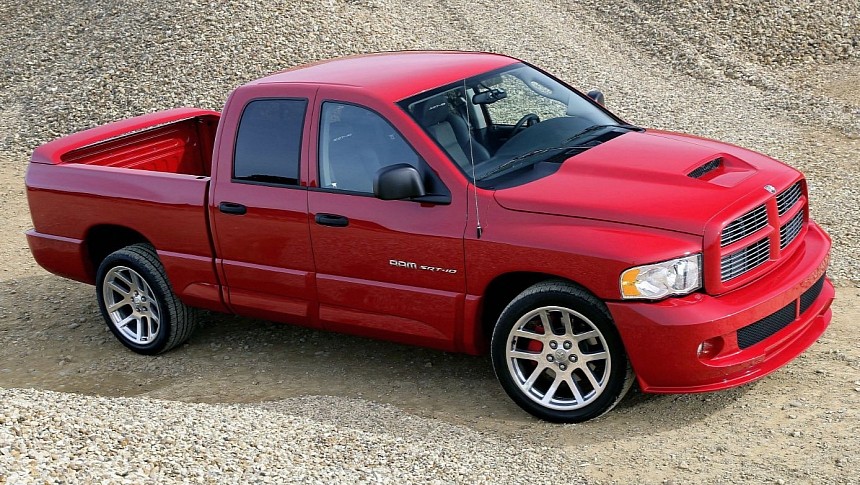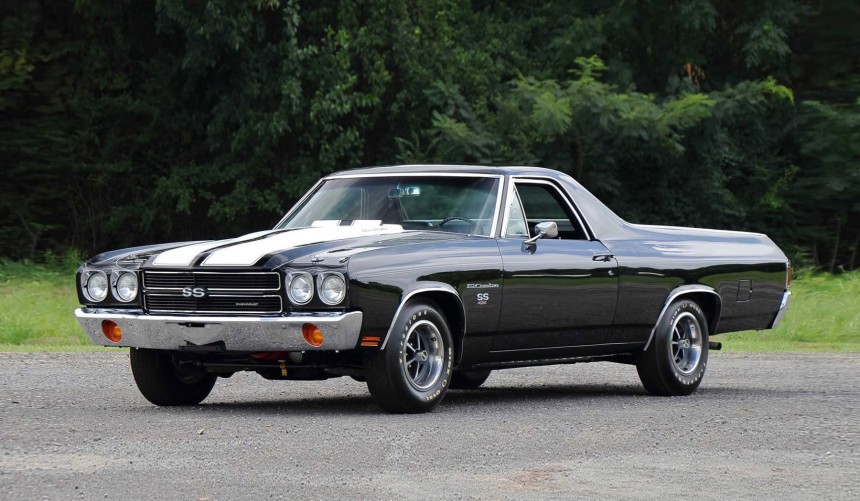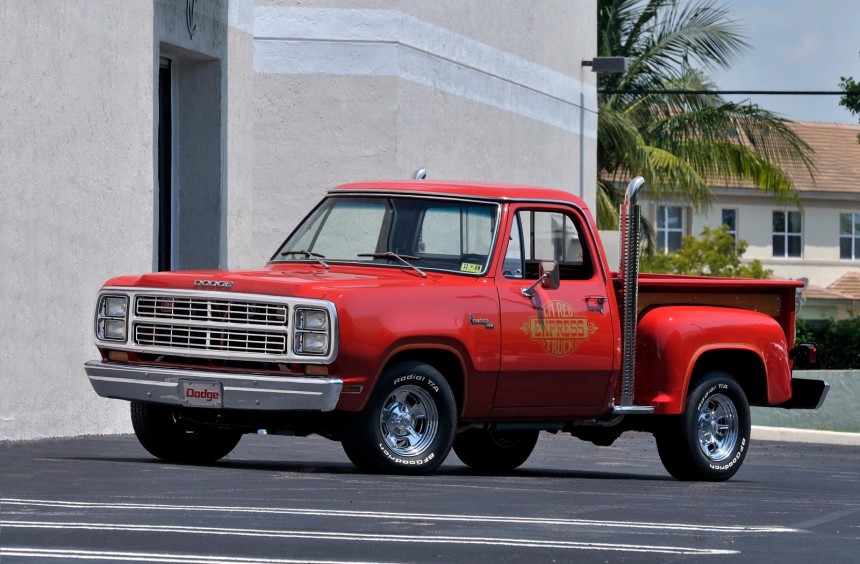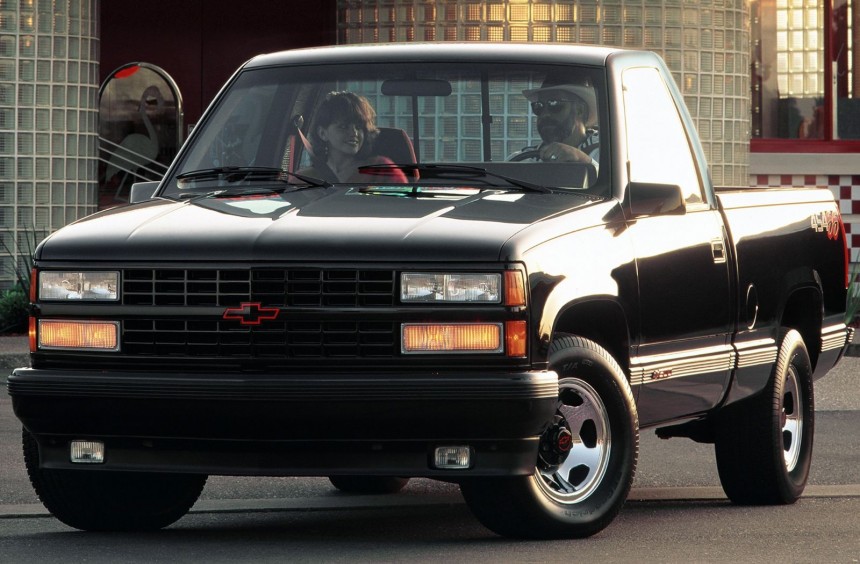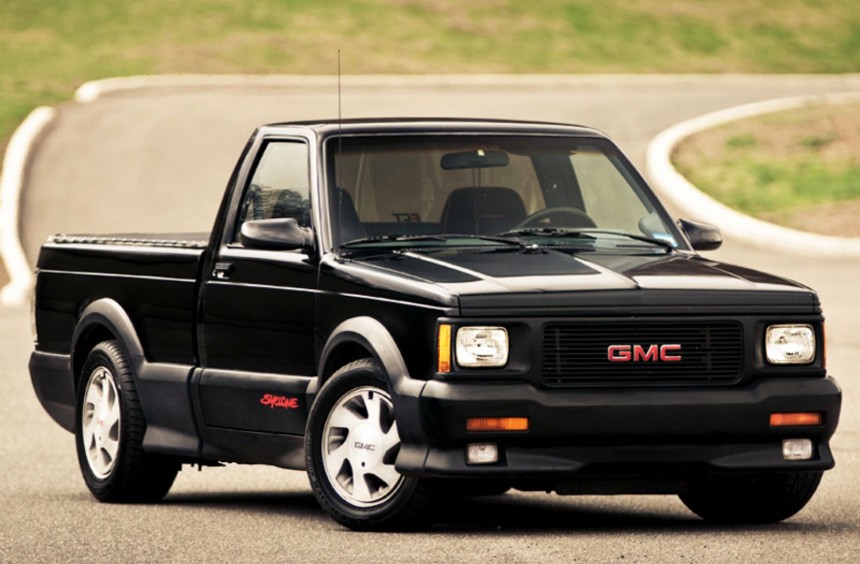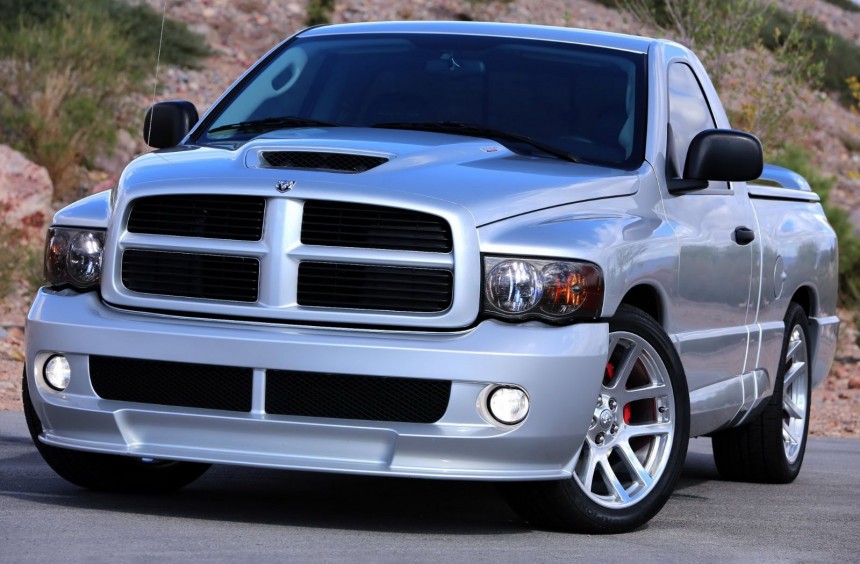When it comes to vehicles, nothing is more American than muscle cars and pickup trucks. These two fundamentally different rides have merged throughout the years, giving birth to some epic high-performance street pickups, also known as muscle trucks.
Far older than muscle cars, American pickup trucks have been the motorized workhorse that helped shape the country's modern infrastructure.
Built on dedicated heavy-duty chassis or, in some cases, based on passenger cars, pickup trucks started becoming more than just workhorses from the 1960s anwars, thanks, in part, to horsepower wars that created muscle cars.
Blending the high-performance street capabilities of the latter and retaining their practicality, muscle trucks became the perfect choice for those who wanted the best of both worlds.
Today, high-performance American pickups hiding muscle car-sourced engines under their hood are all about showcasing their skills off-road.
Though no longer popular, factory-built muscle trucks developed exclusively for shredding tires on paved roads are still fascinating, and in this article, we'll remember five of the most legendary.
As I mentioned, some American pickups were based on regular passenger cars decades ago.
Arguably, the most famous of those was the Chevrolet El Camino, which was introduced in 1959 as a contender for Ford's Ranchero.
Based on the two-door Brookwood, the first-generation El Camino was no match for the Blue Oval's car-based pickup and got axed only two years later.
However, it made a comeback in 1964 as the practical version of the intermediate Chevelle. As the model line grew more and more powerful thanks to the emergence of muscle cars, the El Camino also received its sibling's high-performance powertrains.
Performance peaked during the 1970 model year when the SS version of the El Camino received the Chevelle's mighty 454-ci (7.4-liter) engines.
The most expensive and potent of these high-performance V8s was the legendary LS6. Available only in 1970, this version of the 454 shared the same five-main block with the LS5 but received solid lifters, a more aggressive cam, a higher compression ratio, and, last but not least, a better Holley four-barrel carb.
Rated at 450 hp and 500 lb-ft (678 Nm) of torque, the LS6 consistently enabled the El Camino to run the quarter mile in the mid-13-second range.
Though it was more of a car than a truck, this legendary model was designated as a pickup truck in many states. Therefore, it deserves a place among the greatest American muscle trucks ever produced.
By 1977, the glorious muscle cars that boasted ridiculous horsepower figures in 1970 were either discontinued or still around with heavier chassis and grossly underpowered engines.
With that in mind, developing America's first muscle truck based on a regular pickup seemed like a bad idea. Nevertheless, it happened, and it was a resounding success.
It all started with Dodge's attempt to draw younger buyers to their half-ton pickup truck range by launching a limited-edition version of the D150 called Warlock.
Doning flashy aesthetic improvements but otherwise a normal D150, the Warlock was well received, prompting Dodge to take it one step further.
In 1978, the brand launched a new special edition D150 called Li’l Red Express. Apart from its own unique visual cues, such as chrome bumpers, sidesteps, wheels, and two big-rig-style exhaust stacks, this edition also came with a bespoke engine.
Based on the Police interceptor-spec 360 ci (5.9-liter) Chrysler LA small-block, the V8 received several performance upgrades, including a hotter cam and an 850-CFM four-barrel carb, enabling it to make 225 hp and 295 lb-ft (400 Nm) of torque.
Moreover, since it was installed in a truck, the engine bypassed the requirement for a catalytic converter and got a free-flowing exhaust system instead.
Despite its hefty price tag, Li’l Red Express was a marketing hit, with 2,188 units leaving Dodge dealerships in 1978. The demand was so high that the Chrysler division brought the model back in 1979 and sold 5,118 additional units.
Although Dodge proved Americans were willing to spend money on high-performance street trucks, more than two decades would have to pass until another factory-built muscle truck hit the streets.
This time, the spiritual successor of the Li’l Red Express didn't come from Chrysler but from rivals Chevrolet.
Launched in 1990 and dubbed 454 SS, the muscle truck was initially available only in a black finish and received blacked-out trims to distinguish it from the standard single-cab C1500 it was based on.
A genuine sleeper - especially for those unfamiliar with the model - the truck was powered by a modern version of the 454-ci (7.4-liter) big-block that made the Chevelle and El Camino some of the most potent muscle cars ever built.
Nevertheless, with different emission regulations, the gargantuan V8 was less potent than its LS5 and LS6 ancestors. It was rated at 230 hp and 385 lb-ft (522 Nm), which, for 1990 standards, was sports car level performance.
The 454 SS was produced until 1993. Despite a promising first year in terms of sales and a performance bump to 255 hp in 1991, Chevy's muscle truck was overshadowed by the next entry on our list: the GMC Syclone.
Unlike the late 1970s when the muscle truck formula put forth by the Li’l Red Express wasn't borrowed by any other manufacturer, the first-year success of the 454 SS inspired GM siblings GMC to launch their own performance truck.
But unlike the Chevy with its heavy big block, the Syclone received a smaller turbocharged V6. Displacing 4.6 liters, the engine could deliver 280 hp (209 kW) and 350 lb-ft (475 Nm) of torque - figures unheard of for a half-ton truck.
Thanks to the turbocharged engine and the four-wheel-drive system, the all-black beast could sprint from 0 to 60 mph (97 kph) in 4.3 seconds. Even more impressive, it ran the quarter-mile in 13.4 seconds - faster than many muscle cars from the golden age and faster than more expensive sports cars from the early 1990s.
To prove just how insanely fast it was, Car and Driver raced it against a Ferrari 348 ts in a drag race. Surprisingly, the Syclone beat the V8-powered exotic, but the journalists didn't stop there.
They went for a second run, doubling the distance, and the muscle truck crossed the marker first again.
To make sure the second run wasn't a fluke, the journalist repeated the half-mile run, and the GMC beat the Ferrari for the third straight time.
Fitted with bespoke bumpers, skirts, and wheels, the Syclone was only built during the 1991 model year, with 2,995 units leaving the factory. Encouraged by the success of the high-performance, Sonoma-based truck, GMC introduced a similar two-door SUV called Typhoon in 1992.
Dodger fans hoping for a modern successor if the Li’l Red Express had to wait until 1996, but when the new muscle wagon was finally unveiled, they were disappointed to find out that it was only a concept.
Still, the Ram 1500-based concept was extremely impressive. Introduced alongside the new Viper GTS, it borrowed the supercar's V10 and donned GTS-inspired bumpers as well as wheels.
Though Dodge made it clear that the VTS was never going into production, a Viper V10-powered Ram eventually hit the streets.
Introduced in 2003, the production model dubbed Ram SRT-10 borrowed the same formula used for the VTS and became arguably the greatest street-oriented performance truck ever built by one of the three major Detroit corporations.
Based on the regular cab, short bed third-generation 1500, the SRT-10 took the notion of the muscle to super truck territory.
While the exterior got a Viper-inspired front bumper, hood, and wheels, the chassis was thoroughly beefed up to handle the gargantuan engine with performance hardware like Bilstein sport shocks, stiffer performance springs, or a revised steering system.
Of course, the cherry on top - or rather, in the engine bay - was the 8.3-liter aluminum V10, which had just been updated for the third-generation Viper.
Linked to a Hurst-shifted Tremec T-56 six-speed manual, the V10 was rated at 500 hp and 525 lb-ft (712 Nm) of twist, enabling the 5,130-pound (2,327 kg) truck to sprint from 0 to 60 mph (97 kph) in 4.9 seconds.
The truck was produced until 2006, but a year earlier, Dodge introduced a quad-cab version that made the beast slightly more practical. With 10,046 units produced during the three-year run, the SRT-10 was not only the most outrageous but also the most successful factory-built muscle truck.
Built on dedicated heavy-duty chassis or, in some cases, based on passenger cars, pickup trucks started becoming more than just workhorses from the 1960s anwars, thanks, in part, to horsepower wars that created muscle cars.
Blending the high-performance street capabilities of the latter and retaining their practicality, muscle trucks became the perfect choice for those who wanted the best of both worlds.
Today, high-performance American pickups hiding muscle car-sourced engines under their hood are all about showcasing their skills off-road.
Though no longer popular, factory-built muscle trucks developed exclusively for shredding tires on paved roads are still fascinating, and in this article, we'll remember five of the most legendary.
Chevrolet El Camino SS 454 LS6
Arguably, the most famous of those was the Chevrolet El Camino, which was introduced in 1959 as a contender for Ford's Ranchero.
Based on the two-door Brookwood, the first-generation El Camino was no match for the Blue Oval's car-based pickup and got axed only two years later.
However, it made a comeback in 1964 as the practical version of the intermediate Chevelle. As the model line grew more and more powerful thanks to the emergence of muscle cars, the El Camino also received its sibling's high-performance powertrains.
Performance peaked during the 1970 model year when the SS version of the El Camino received the Chevelle's mighty 454-ci (7.4-liter) engines.
The most expensive and potent of these high-performance V8s was the legendary LS6. Available only in 1970, this version of the 454 shared the same five-main block with the LS5 but received solid lifters, a more aggressive cam, a higher compression ratio, and, last but not least, a better Holley four-barrel carb.
Rated at 450 hp and 500 lb-ft (678 Nm) of torque, the LS6 consistently enabled the El Camino to run the quarter mile in the mid-13-second range.
Though it was more of a car than a truck, this legendary model was designated as a pickup truck in many states. Therefore, it deserves a place among the greatest American muscle trucks ever produced.
Dodge Li’l Red Express
With that in mind, developing America's first muscle truck based on a regular pickup seemed like a bad idea. Nevertheless, it happened, and it was a resounding success.
It all started with Dodge's attempt to draw younger buyers to their half-ton pickup truck range by launching a limited-edition version of the D150 called Warlock.
Doning flashy aesthetic improvements but otherwise a normal D150, the Warlock was well received, prompting Dodge to take it one step further.
In 1978, the brand launched a new special edition D150 called Li’l Red Express. Apart from its own unique visual cues, such as chrome bumpers, sidesteps, wheels, and two big-rig-style exhaust stacks, this edition also came with a bespoke engine.
Based on the Police interceptor-spec 360 ci (5.9-liter) Chrysler LA small-block, the V8 received several performance upgrades, including a hotter cam and an 850-CFM four-barrel carb, enabling it to make 225 hp and 295 lb-ft (400 Nm) of torque.
Moreover, since it was installed in a truck, the engine bypassed the requirement for a catalytic converter and got a free-flowing exhaust system instead.
Despite its hefty price tag, Li’l Red Express was a marketing hit, with 2,188 units leaving Dodge dealerships in 1978. The demand was so high that the Chrysler division brought the model back in 1979 and sold 5,118 additional units.
Chevrolet 454 SS
This time, the spiritual successor of the Li’l Red Express didn't come from Chrysler but from rivals Chevrolet.
Launched in 1990 and dubbed 454 SS, the muscle truck was initially available only in a black finish and received blacked-out trims to distinguish it from the standard single-cab C1500 it was based on.
A genuine sleeper - especially for those unfamiliar with the model - the truck was powered by a modern version of the 454-ci (7.4-liter) big-block that made the Chevelle and El Camino some of the most potent muscle cars ever built.
Nevertheless, with different emission regulations, the gargantuan V8 was less potent than its LS5 and LS6 ancestors. It was rated at 230 hp and 385 lb-ft (522 Nm), which, for 1990 standards, was sports car level performance.
The 454 SS was produced until 1993. Despite a promising first year in terms of sales and a performance bump to 255 hp in 1991, Chevy's muscle truck was overshadowed by the next entry on our list: the GMC Syclone.
GMC Syclone
But unlike the Chevy with its heavy big block, the Syclone received a smaller turbocharged V6. Displacing 4.6 liters, the engine could deliver 280 hp (209 kW) and 350 lb-ft (475 Nm) of torque - figures unheard of for a half-ton truck.
Thanks to the turbocharged engine and the four-wheel-drive system, the all-black beast could sprint from 0 to 60 mph (97 kph) in 4.3 seconds. Even more impressive, it ran the quarter-mile in 13.4 seconds - faster than many muscle cars from the golden age and faster than more expensive sports cars from the early 1990s.
To prove just how insanely fast it was, Car and Driver raced it against a Ferrari 348 ts in a drag race. Surprisingly, the Syclone beat the V8-powered exotic, but the journalists didn't stop there.
They went for a second run, doubling the distance, and the muscle truck crossed the marker first again.
To make sure the second run wasn't a fluke, the journalist repeated the half-mile run, and the GMC beat the Ferrari for the third straight time.
Fitted with bespoke bumpers, skirts, and wheels, the Syclone was only built during the 1991 model year, with 2,995 units leaving the factory. Encouraged by the success of the high-performance, Sonoma-based truck, GMC introduced a similar two-door SUV called Typhoon in 1992.
Dodge Ram SRT-10
Still, the Ram 1500-based concept was extremely impressive. Introduced alongside the new Viper GTS, it borrowed the supercar's V10 and donned GTS-inspired bumpers as well as wheels.
Though Dodge made it clear that the VTS was never going into production, a Viper V10-powered Ram eventually hit the streets.
Introduced in 2003, the production model dubbed Ram SRT-10 borrowed the same formula used for the VTS and became arguably the greatest street-oriented performance truck ever built by one of the three major Detroit corporations.
Based on the regular cab, short bed third-generation 1500, the SRT-10 took the notion of the muscle to super truck territory.
While the exterior got a Viper-inspired front bumper, hood, and wheels, the chassis was thoroughly beefed up to handle the gargantuan engine with performance hardware like Bilstein sport shocks, stiffer performance springs, or a revised steering system.
Of course, the cherry on top - or rather, in the engine bay - was the 8.3-liter aluminum V10, which had just been updated for the third-generation Viper.
Linked to a Hurst-shifted Tremec T-56 six-speed manual, the V10 was rated at 500 hp and 525 lb-ft (712 Nm) of twist, enabling the 5,130-pound (2,327 kg) truck to sprint from 0 to 60 mph (97 kph) in 4.9 seconds.
The truck was produced until 2006, but a year earlier, Dodge introduced a quad-cab version that made the beast slightly more practical. With 10,046 units produced during the three-year run, the SRT-10 was not only the most outrageous but also the most successful factory-built muscle truck.
